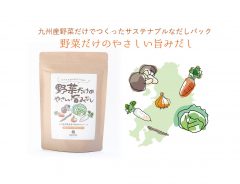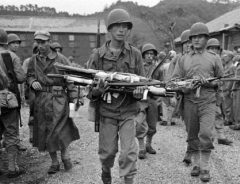- Source:
- © JAPAN Forward
- Tags:
- Ajirojima Islet / Bungo Suido Channel / cosmic dust / Ebisu / JAPAN Forward / Kyushu / long-exposure photography / Oita Prefecture / Ryosuke Kawaguchi / Sankei Shimbun Co. Ltd. / stars / Tsukumi
Related Article
-

When A Snow Falls On A Black Japanese Castle…
-

Tokyo 2020 Olympic and Paralympic Torch Relays: Routes, Runners and Race Details
-

You can help reduce food loss when you buy this vegetable dashi made with imperfect produce
-

Take Your Best Photos of Mount Fuji from Yamanashi
-

Fans Vote Hello Kitty the Most ‘Kawaii’ Sanrio Character for 2019
-

Do Japanese Art Swords Surrendered after WWII Constitute War Loot?



(by JAPAN Forward)
The moon peeks out between the clouds, silhouetting the profile of the islet. Depicted in a long-exposure photograph are a host of light trails from stars that look as though they are showering down on the tiny island.
Photo by Ryosuke Kawaguchi © JAPAN Forward
The Ajirojima islet in the city of Tsukumi, Oita Prefecture, faces the Bungo Suido channel between Kyushu and Shikoku Islands. It is known for its unique geographical features, including a large number of strata created at the bottom of sea that have been pushed to the surface and exposed because of tectonic plate movements.
Photo by Ryosuke Kawaguchi © JAPAN Forward
The exposed strata give us a firsthand look at Earth’s records that date back to some 200 million years ago.
Photo by Ryosuke Kawaguchi © JAPAN Forward
At low tide, the islet can be reached on foot from the mainland. Walking across a rocky area that was a seabed in times long past evokes a sense of mystery and awe.
Nothing is to be seen on the uninhabited islet except a small shrine dedicated to Ebisu, the Japanese god of bountiful fisheries and safety at the seas. At night, you can hear no sounds but the waves, except for engine noises of fishing boats sailing out to sea.
Photo by Ryosuke Kawaguchi © JAPAN Forward
Findings in a geological study that began in 2007 on Ajirojima islet reveal that its strata contain fossilized particles of “cosmic dust” confirmed to have dated from around 240 million years ago. They were the oldest ever to have been discovered at the time and the discovery made headlines around the world.
Written by Japan ForwardThe continuation of this article can be read on the "Japan Forward" site.
Ajirojima Islet: Where ‘Crumbs of Shooting Stars’ Sleep